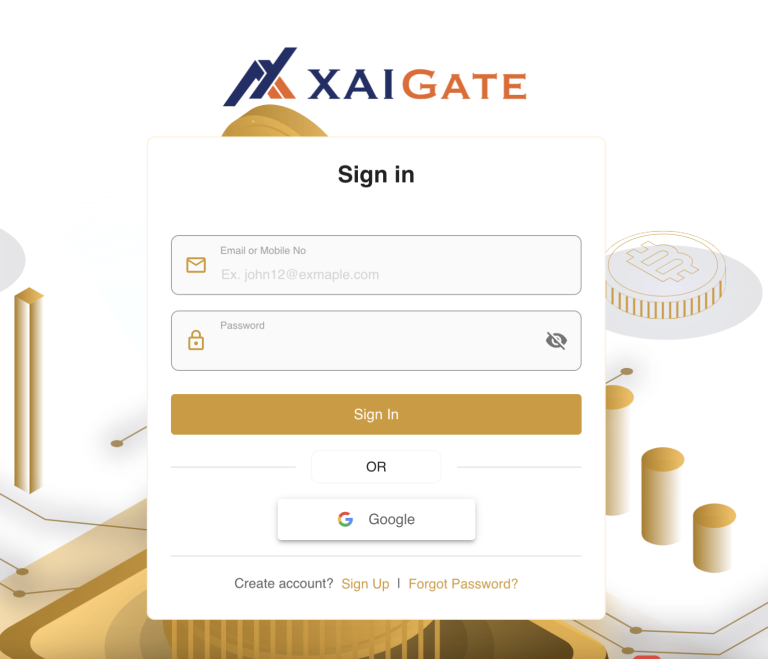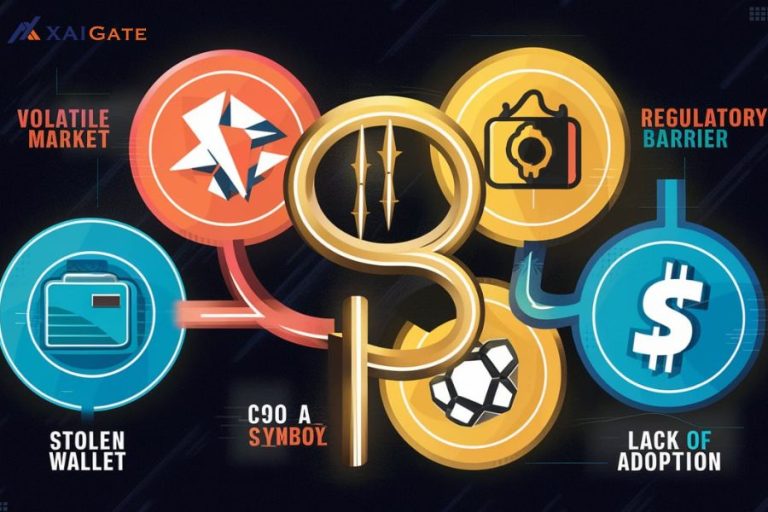It is important to realize some things when you want to create a digital money. Often enough, Blockchain serves as the basis for building cryptocurrencies. Then, there is a need to identify the main features and set goals for your virtual money to inform programming or choosing existing blockchain platforms for development purposes. Finally, it is necessary to guarantee safety precautions and comply with laws to enable release of this kind of online resources. These XaiGate‘s steps will help you understand “How to create a cryptocurrency?” and make your digital coin a reality.

Pros and Cons of Making a Cryptocurrency
It can be seen that launching a digital currency comes with its own strength and draw back.
Pros:
The benefits of this are potential for innovation, market disruption and building a decentralized platform giving power to the users and reliance on banks becomes less. It also gives rise to the occurrence of ICOs that introduce fresh business models and help to raise capital.
Cons:
The drawbacks of this, on the other hand, are evident in its high technical complexity and cost during development and maintenance. Furthermore, there remains a regulatory uncertainty as well as a risk of security vulnerability that can result in scams or financial fraudsters taking advantage of unsuspecting individuals. Hence, one must understand these advantages and disadvantages if they are interested in creating their own cryptocurrency.

How to create a cryptocurrency – detailed steps
In order to figure out “how to create a cryptocurrency?”, you can either select a blockchain platform from among existing ones or write your own blockchain code. You have to determine why you need this type of digital money set-up development it and take care of its safety issues. Ultimately, release your token into circulation, advertise it and deal with legal procedures that will enable you make profits from selling off this currency.

1. Determine the Use for Your Cryptocurrency
To figure out what to use your cryptocurrency for think about the value it provides that makes it different and the problems being addressed by it; defining the exact use case will influence future progressions while at the same time help in attracting people who may be interested until the end result becomes achieved. A vital measure in determining your virtual money’s identity and features stands here.
2. Select a Blockchain Platform
Choosing the correct blockchain platform is very important when learning “how to create a cryptocurrency?”. It is the platform that determines the functionalities and safety of the coin. Among the popular choices are Ethereum, Binance Smart Chain, and Solana, each having its unique features and advantages. To make them match your project’s goals, weigh their advantages and disadvantages thoughtfully.

3. Prepare the Nodes
In the process of creating a cryptocurrency, it is key to prepare nodes which are necessary for the stability and security of the network. Make sure you create nodes, configure them so as to enable exhaustive communication, transmission confirmation as well as for sustaining block chain booklet. This phase is necessary as it helps to centralize the net as well as it runs smoothly without cracks.
4. Choose a Blockchain Architecture
It’s important to choose a correct blockchain architecture when learning “how to create a cryptocurrency?” You either use either an already existing blockchain such as Ethereum or start building another. This will affect scalability, security features and cryptocurrency’s functionality .
5. Establish APIs
In order to ensure that your cryptocurrency cellular-responsive system is free from any interruptions and is fully functional, set up dialog between types of computer programming that always function continuously. According to one source, interfaces allow software parts that are unlike each other to communicate thereby making information processing faster and better sharing of data. Thus it is important for those dealing with digital money to design strong interfaces which will improve how clients will work with crypto.

6. Create a Suitable Interface
Design a user-friendly digital wallet and management platform whenever developing cryptocurrency. Make certain it offers strong security features as well as intuitive navigation to foster user trust and experience. The usability of an interface matters a lot during its operation; this may affect how may people start using your money system positively.

7. Understand the Legal Considerations
It is important to understand the law when making cryptocurrency to ensure that you are following regulations. For your area, look up the rules on electronic monies, stocks and preventing illegal money outcomes. Professional legal advice given could assist one in getting through a complicated area of rules governing this issue without getting into trouble.
>>> Learn more about: Crypto payment gateway
Questions to Answer Before Creating a Cryptocurrency
- Why Do You Want to Make a Cryptocurrency?
In order to create a decentralized financial system that empowers users and promotes transparency.
- Do You Have the Knowledge to Program and Maintain a Crypto?
I can program and maintain a cryptocurrency because I possess the necessary skills and knowledge.
- Can I Create My Own Cryptocurrency?
Yes, you can create your own cryptocurrency with the correct technical know-how and resources.
- How Much Does it Cost to Make a Cryptocurrency?
The cost for an inexpensive coin is in the range of hundreds of dollars while expensive projects could cost as much as millions of dollars.

>>> Learn more: How Does Cryptocurrency Payment Gateway Work
Conclusion
Understanding blockchain technology, designing the coin’s protocol, and developing software are necessary steps to create a cryptocurrency. Critical stages include picking out a consensus mechanism, scripting blockchain code, and maintaining the security of the network. For it to be successful, testing and launching this coin are essential practices. In essence, “Cryptocurrency Payment” is a combination of technical knowledge and strategic thinking.
XAIGATE is a secure and user-friendly crypto payment gateway that allows businesses to accept cryptocurrency payments from customers around the world. With How To Accept Crypto on Your WordPress Website, businesses can easily integrate cryptocurrency payments into their existing websites or online stores.
>>> Learn more: How to trade cryptocurrency in 6 steps









What are the 7 easy steps to create your own cryptocurrency, and what factors should you consider during the process?
Creating your own cryptocurrency can be an exciting and rewarding venture, especially as blockchain technology continues to grow in popularity. Whether you’re looking to create a coin or a token, the process involves several key steps. Here are 7 easy steps to guide you through the creation of your own cryptocurrency:
1. Define the Purpose and Concept of Your Cryptocurrency
Before diving into the technical aspects, you need to define the purpose of your cryptocurrency. Ask yourself:
What problem will your cryptocurrency solve?
Who is your target audience?
Is your cryptocurrency meant for a specific use case (e.g., payments, decentralized finance, gaming, etc.)?
Clearly defining the purpose will help you choose whether to create a coin (which has its own blockchain) or a token (which operates on an existing blockchain like Ethereum or Binance Smart Chain).
2. Choose a Consensus Mechanism
The consensus mechanism is the protocol that allows transactions to be verified and added to the blockchain. It determines how your cryptocurrency network reaches an agreement on the validity of transactions. There are several types of consensus mechanisms to choose from:
Proof of Work (PoW): Used by Bitcoin, where miners solve complex mathematical puzzles to validate transactions.
Proof of Stake (PoS): Used by Ethereum 2.0, where validators hold a certain amount of cryptocurrency to propose and validate new blocks.
Delegated Proof of Stake (DPoS), Proof of Authority (PoA), and other mechanisms also exist.
The choice of consensus mechanism will depend on your project’s goals, security requirements, and scalability needs.
3. Pick a Blockchain Platform
If you’re creating a cryptocurrency token (rather than a coin), you’ll need to choose a blockchain platform to build it on. Some popular blockchain platforms include:
Ethereum: Ideal for creating ERC-20 tokens with smart contract functionality.
Binance Smart Chain: A fast and cost-efficient platform for creating BEP-20 tokens.
Solana: Known for its high throughput and scalability.
Polkadot: Great for interoperability between different blockchains.
If you plan to create a coin, you’ll need to either fork an existing blockchain or create a brand-new blockchain.
4. Design the Nodes
Decide whether your cryptocurrency will be centralized or decentralized. For a fully decentralized cryptocurrency, you’ll need to create and manage nodes (computers connected to the blockchain network). These nodes will validate transactions and secure the network. You need to choose:
Public vs. Private Nodes: Public nodes are accessible to everyone, while private nodes are controlled by specific users or organizations.
Node Hosting: Determine where you’ll host the nodes, whether on cloud servers or decentralized networks.
5. Establish the Internal Architecture
Determine how your cryptocurrency will function internally. This involves:
Blockchain Structure: Define the structure of the blockchain, such as the block size, block time, and transaction speed.
Transaction Details: Decide how transactions will be processed and validated, and what type of data will be recorded on the blockchain.
Tokenomics: Define the supply of your coin or token (fixed supply, inflationary, deflationary), distribution method, and any staking or reward mechanisms.
6. Develop the Cryptocurrency
Now comes the technical part of developing the cryptocurrency. Depending on your technical expertise, you can either:
Build from Scratch: Develop the blockchain and cryptocurrency code from the ground up. This requires strong programming knowledge and can take significant time and resources.
Use a Platform or Framework: Utilize existing platforms or frameworks to simplify the development process. For example, you can use Ethereum or Binance Smart Chain to create tokens using pre-existing standards like ERC-20 or BEP-20.
If you are not familiar with coding, hiring a developer or working with a development team is often the best route.
7. Test and Launch Your Cryptocurrency
Before launching your cryptocurrency to the public, thorough testing is essential:
Testnet Deployment: Launch a testnet (a simulated version of the blockchain) to test the functionality of your cryptocurrency, ensuring that transactions are processed correctly and that security measures are in place.
Security Audits: Conduct thorough security audits to identify and fix potential vulnerabilities. This is especially important if you’re creating a token with smart contracts, as bugs can lead to vulnerabilities.
Launch on Mainnet: Once you’re satisfied with testing, launch your cryptocurrency on the mainnet (the live version of the blockchain).
Additional Considerations:
Legal Compliance: Make sure your cryptocurrency complies with local and international regulations regarding digital assets, securities, and taxation.
Marketing and Community Building: To ensure your cryptocurrency’s success, build a community around it. Engage with potential users and investors, and create awareness through social media, a website, and other marketing channels.
Exchange Listings: If you want your cryptocurrency to be traded, you will need to list it on cryptocurrency exchanges. This requires following their listing procedures and meeting certain criteria.
Conclusion:
Creating a cryptocurrency involves technical, legal, and strategic decisions. By following these 7 easy steps, you can turn your vision into a reality. Whether you’re creating a coin with its own blockchain or a token on an existing platform, the key is to have a clear purpose, a solid technical foundation, and a plan for growing and sustaining your cryptocurrency in the long term.